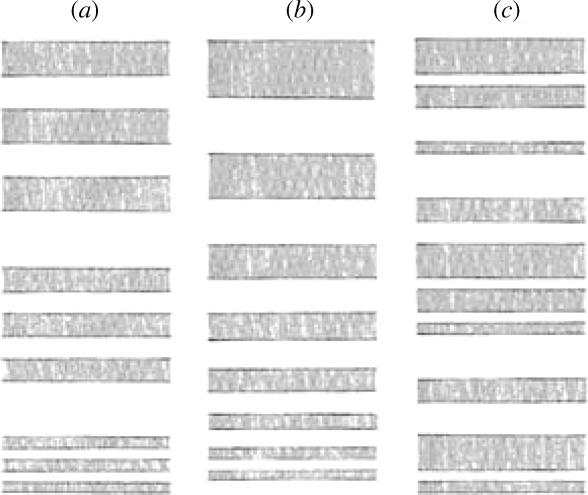Figure 13.

Three ways of achieving a broad-band wavelength-independent reflector in a multilayer reflector (high refractive index material is shown shaded; Parker et al. 1998c). (a) Three quarter-wave (narrow-band) stacks, each tuned to a different wavelength, such as a ‘red’, ‘green’ and ‘blue’. (b) A ‘chirped’ stack, where layer thickness, and consequently the wavelength reflected in phase, decreases systematically with depth in the stack. (c) A ‘chaotic’ stack, where layers of different thickness are arranged randomly within the stack. Type a can be found in the herring (Denton 1970); type b in a lysianassoid amphipod (Crustacea; Parker 1999b); type c in many other silvery fishes.
